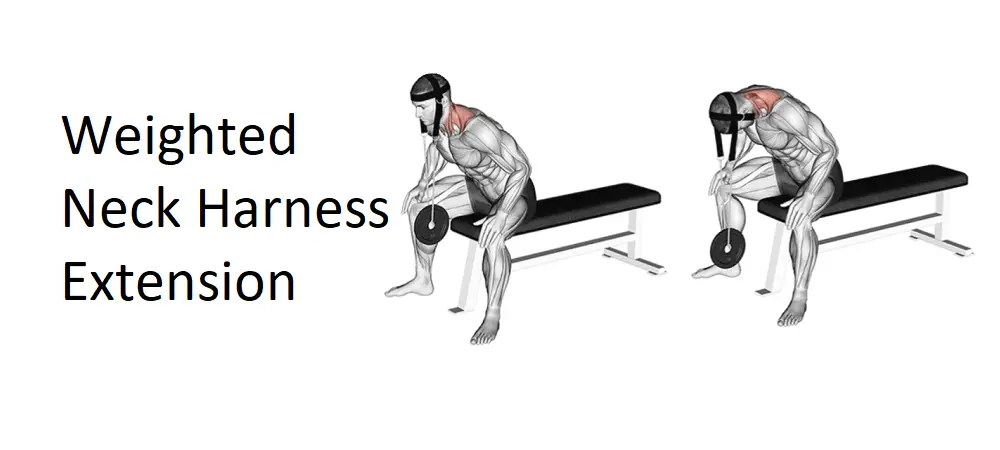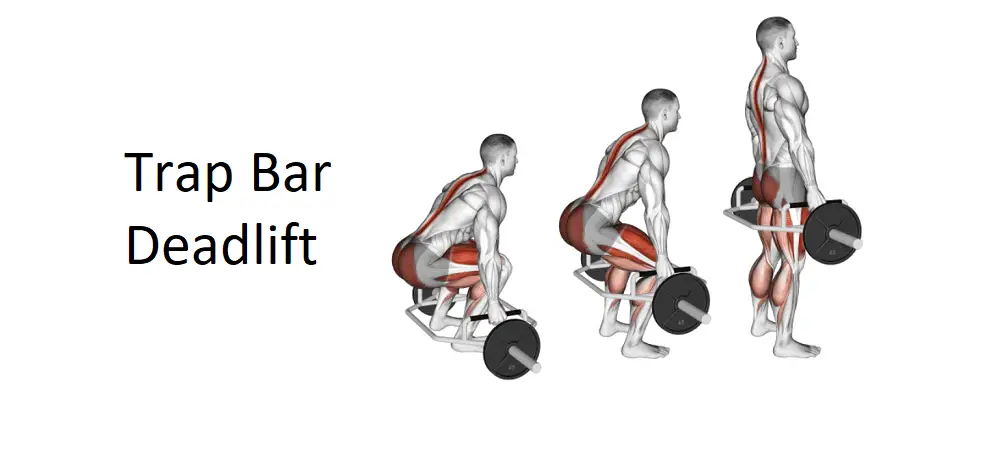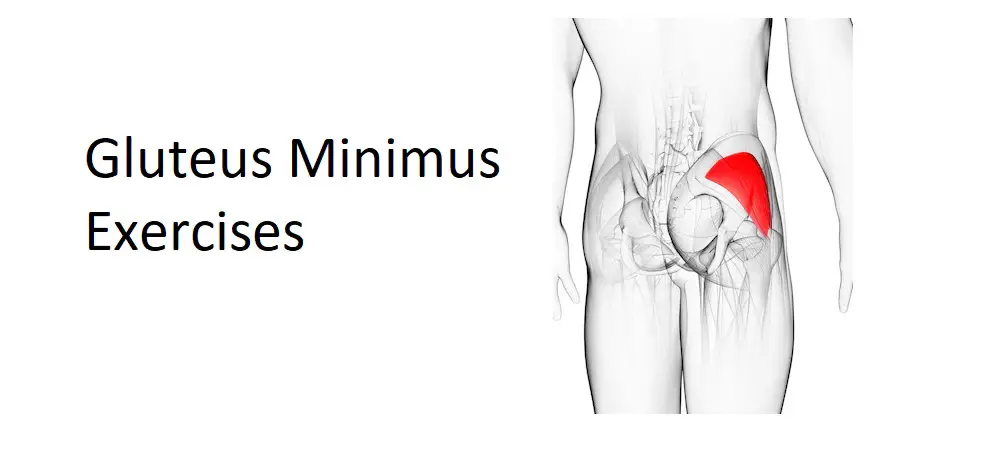Table of Contents
Introduction
Weighted Neck Harness Extension is an effective exercise designed to target and strengthen the muscles of the neck, including the sternocleidomastoid, levator scapulae, and trapezius muscles. By using a neck harness attached to a weight plate or resistance band, you can effectively overload these muscles and improve neck strength and stability. In this comprehensive guide, we’ll explore the correct technique, benefits, variations, and other essential details associated with Weighted Neck Harness Extension.
Instructions
Setup:
- Attach Weight Plate: Attach a weight plate to the neck harness using a carabiner or clip. Start with a light weight and gradually increase the load as needed.
- Positioning: Stand or sit in a comfortable position with your back straight and shoulders relaxed. Place the neck harness securely around your head, positioning it so that the weight plate hangs down in front of your chest.
Execution:
- Neck Extension: Begin the exercise by slowly extending your neck upward, lifting the weight plate toward the ceiling. Keep your chin tucked slightly and maintain a controlled motion throughout the movement.
- Full Range of Motion: Extend your neck as far as comfortably possible, aiming to achieve a full range of motion without straining or overextending the neck muscles.
- Contraction: Pause briefly at the top of the movement, focusing on contracting the muscles of the neck. Feel the tension in the muscles before slowly lowering the weight plate back to the starting position.
- Controlled Descent: Lower the weight plate back down with control, returning to the starting position without allowing the weight to drop or jerk suddenly.
- Repeat: Perform the desired number of repetitions, maintaining proper form and technique throughout the exercise. Start with a lighter weight and gradually increase the load as your neck muscles become stronger.
Benefits
- Neck Strength: Weighted Neck Harness Extension is an excellent exercise for strengthening the muscles of the neck, including the sternocleidomastoid, levator scapulae, and trapezius muscles. Increased neck strength can help improve posture, reduce the risk of neck injuries, and enhance overall athletic performance.
- Muscle Hypertrophy: By overloading the neck muscles with resistance, Weighted Neck Harness Extension can promote muscle hypertrophy, leading to increased muscle size and definition in the neck region.
- Injury Prevention: Strengthening the muscles of the neck can help prevent common injuries, such as whiplash, neck strains, and cervical spine injuries. A strong neck provides better support and stability for the head and neck during various activities and movements.
- Improved Athletic Performance: Strong neck muscles are essential for athletes participating in contact sports, combat sports, and activities that involve repetitive head movements. Weighted Neck Harness Extension can help athletes develop the neck strength necessary for optimal performance and injury prevention.
Variations
- Resistance Band Neck Extension: Perform the exercise using a resistance band attached to a stable anchor point. Adjust the tension of the band to increase or decrease resistance.
- Seated Neck Harness Extension: Perform the exercise while seated on a bench or chair to isolate the neck muscles and minimize the involvement of other muscle groups.
Muscles worked in Weighted Neck Harness Extension
Weighted Neck Harness Extension primarily targets the muscles of the neck, including:
- Sternocleidomastoid (SCM): The sternocleidomastoid muscles run along the sides of the neck and are responsible for various movements of the head, including rotation, flexion, and lateral flexion. They are heavily engaged during neck extension exercises like Weighted Neck Harness Extension.
- Trapezius: The trapezius muscles, particularly the upper portion (upper traps), are located on the back and sides of the neck. They help stabilize and support the neck and shoulders during neck extension movements.
- Levator Scapulae: The levator scapulae muscles are situated at the back and side of the neck and play a role in elevating and rotating the scapula (shoulder blade). They assist in neck extension and provide stability to the cervical spine.
By strengthening these muscles, Weighted Neck Harness Extension can help improve neck strength, stability, and posture. Additionally, it can aid in injury prevention and enhance overall neck health and function.
Alternate names for Weighted Neck Harness Extension
- Neck Extension with Harness
- Weighted Neck Extension
- Neck Harness Stretch
- Neck Extension Exercise with Weighted Harness
FAQs
What is a Weighted Neck Harness Extension?
The Weighted Neck Harness Extension is a strength training exercise specifically targeting the muscles of the neck, primarily the cervical spine extensors. It involves wearing a neck harness loaded with weight plates and performing neck extension movements against resistance.
How do you perform a Weighted Neck Harness Extension?
Start by securing a neck harness around your head, ensuring it fits snugly and comfortably. Attach weight plates to the harness using a chain or strap.
Stand or sit with your back straight and your head in a neutral position.
Slowly extend your neck upward, lifting the weight plates attached to the harness against gravity. Keep your movements controlled and avoid jerking or sudden motions.
Pause briefly at the top of the movement, then slowly lower the weight plates back down to the starting position.
Repeat for the desired number of repetitions.
Which muscles does the Weighted Neck Harness Extension target?
The Weighted Neck Harness Extension primarily targets the cervical spine extensors, including muscles such as the splenius capitis, splenius cervicis, and semispinalis capitis. It also engages other muscles of the neck to a lesser extent, including the upper trapezius and levator scapulae.
What equipment is needed for the Weighted Neck Harness Extension?
You’ll need a neck harness specifically designed for this exercise, as well as weight plates or other forms of resistance to load the harness. Optionally, you may use a mirror to monitor your form during the exercise.
What are some tips for proper form?
Keep your movements slow and controlled throughout the exercise to maximize muscle engagement and minimize the risk of injury.
Focus on using the muscles of the neck to lift the weight plates, rather than relying on momentum or other body parts.
Avoid hyperextending the neck or straining excessively during the movement. Maintain a comfortable range of motion.
Start with lighter weights and gradually increase the resistance as you become stronger and more comfortable with the exercise.
How many sets and repetitions should I do for the Weighted Neck Harness Extension?
The number of sets and repetitions can vary depending on your fitness level, goals, and overall workout routine. A typical starting point might be 2-3 sets of 10-15 repetitions.
Is it safe to perform the Weighted Neck Harness Extension?
When performed with proper form and an appropriate weight/resistance level, the Weighted Neck Harness Extension can be safe and effective. However, it’s essential to start gradually, listen to your body, and avoid any movements that cause pain or discomfort.
If you have any pre-existing neck conditions or injuries, it’s advisable to consult with a healthcare professional before attempting this exercise.
Can the Weighted Neck Harness Extension help with neck pain or posture?
Strengthening the muscles of the neck, as targeted by the Weighted Neck Harness Extension, can potentially help improve neck pain and posture. However, individual results may vary, and it’s essential to address any underlying issues with the guidance of a healthcare professional.
Are there any alternatives to the Weighted Neck Harness Extension?
Yes, there are alternative exercises that target similar muscle groups, such as neck flexion and extension exercises using bodyweight or resistance bands, or using machines specifically designed for neck strengthening.
Should I feel any discomfort during the Weighted Neck Harness Extension?
You may feel some muscular fatigue or discomfort, particularly in the muscles being worked, but you should not experience sharp or shooting pain. If you do, stop the exercise immediately and reassess your form and weight/resistance level. If pain persists, consult with a healthcare professional.
Conclusion
Incorporating Weighted Neck Harness Extension into your workout routine can offer a variety of benefits, including improved neck strength, muscle hypertrophy, injury prevention, and enhanced athletic performance. By following the proper technique and gradually increasing the resistance over time, you can effectively strengthen the muscles of the neck and promote overall neck health. Remember to start with a lighter weight and gradually progress as your neck muscles adapt to the increased load. If you experience any discomfort or pain during the exercise, cease immediately and consult with a fitness professional or healthcare provider.
Other Neck Exercises
Check our Home Page for the latest posts
You can also read Effectiveness of a tailored neck training program on neck strength, movement, and fatigue in under-19 male rugby players: a randomized controlled pilot study








